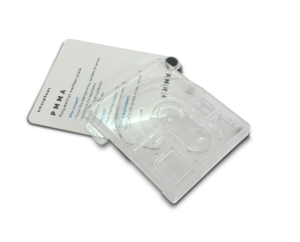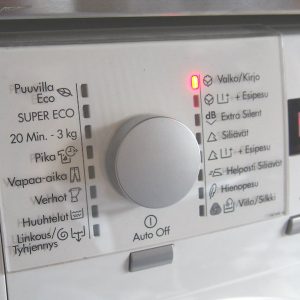PMMA is a mid-priced amorphous plastic with exceptional transparency. It is often used instead of glass. However, poor heat resistance limits the use of PMMA. Similarly to PS, small shrinkage and poor toughness are characteristics of PMMA. It is often called Acrylic.
Why choose it?
- Glass-like transparency. PMMA is commonly used in different types of lenses.
- Exceptionally good UV resistance.
- Scratch resistance due to high surface hardness.
Why not choose it?
- Poor thermal resistance. PMMP becomes very soft at temperatures as low as 70°C.
- Fragility. Thin-walled PMMA components are sensitive to impacts.
Typical applications:
- Boat windows
- Car lights
PMMI is a very similar material with excellent transparency. The main difference is the improved thermal resistance. PMMI is better than PMMA in, for example, car headlight optics, in which the temperature might rise up to 150°C.
By examining the Plasticprop sample made of PMMA, you can draw for example the following conclusions:
- PMMA is highly transparent. If compared with PC, which also has good transparency, the difference is clearly visible, especially at rib locations.
- Surprisingly, the filling window is full, although PMMA is generally characterized by poor fluidity. The melt has filled the integral hinge, but you can turn the element by only a few degrees before it breaks off.
- When dropped on the floor, the PMMA sample breaks easily. The material’s impact resistance is far from that of PC.
- If you leave the PMMA and PC sample outside over summer, you will notice that the UV resistance of PMMA is clearly better.
- If the PMMA sample is heated to 80°C, it softens noticeably. The heat resistance of PMMA is substantially lower than that of PC.


